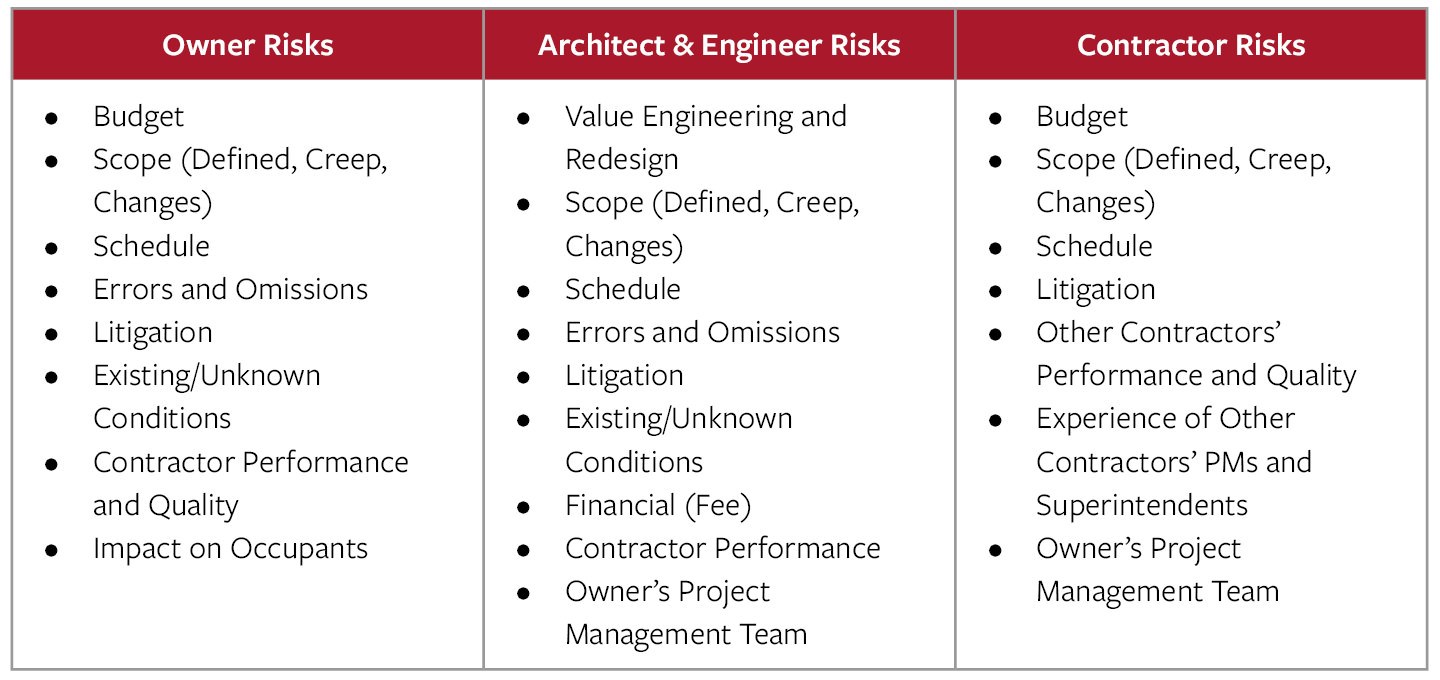Is Design-Assist Right for Your Project?
By James T. Cicero and Rocco Gallo | Apr 19, 2018

Over the past few months, we’ve talked about what design-assist is, why it’s a great approach for projects, and how it reduces risks and improves outcomes.
That doesn’t mean it’s easy. Design-assist makes new demands on teams. It calls for cultural shifts and new behaviors.
We’ve hit speed bumps on design-assist projects. We’ve talked to owners who have tried design-assist and been underwhelmed with the results.
If you’re considering design-assist for an upcoming project, here are seven essential questions to ask about your organization, your project partners, and your project.
Your Organization
Do you have the internal resources to devote to design-assist?
Design-assist gives owners the opportunity to have more participation than traditional delivery methods. This is especially true if you’re undertaking a full design-assist effort (as opposed to using it in a limited capacity, such as for pre-construction field investigations).
Without an owner who is ready to engage with their team and provide direction in terms of priorities and goals, you may not receive the total value of design-assist.
If your organization hasn’t used design-assist before, are you willing to be the guinea pig?
Design-assist has a learning curve. Collaboration and transparency can be challenging when teams are accustomed to the silos of traditional delivery methods. Is your organization willing to experiment with a new delivery model and learn from the experience? Do you have the willpower to persist through the challenges?
We weren’t 100% successful on our first design-assist project. We didn’t understand everyone’s roles. We didn’t know the kinds of things that could go wrong. We were willing to learn, though, and we sure did. Our next design-assist project with the same owner went much better. The third went even better yet. We still have a long list of lessons learned, but they’re smaller lessons. More things are going exceptionally well, surpassing what we could have delivered through traditional methods.
Is your organization ready to pay contractors for pre-construction services?
Design-assist requires a larger initial investment than traditional delivery methods.
The owner pays the trade contractors to perform up-front work, in addition to paying for the design team’s services (and, depending on delivery method, the construction manager’s services). On the surface, it might look like the owner is simply spending more money. The value may not be immediately apparent. We talk about this issue here.
Will your organization embrace the idea that investing more during design pays off during construction and beyond?
Does your internal audit process allow for a no-bid approach?
One distinguishing characteristic of design-assist is that the owner generally does not use competitive bidding. They select the full team, including trade contractors, at the beginning of the project. (We talk about why this matters here and here).
For some organizations, the no-bid approach will raise a red flag. How do you know that you’re getting the right price without multiple bids? How do you prove that you’re picking a qualified team, rather than playing favorites?
These are important questions.
With design-assist, owners pick their team based on qualifications and team chemistry more than on price. They’re looking for people can who work collaboratively to deliver the project. Design-assist inherently demands a higher level of trust.
Design-assist, however, doesn’t leave the owner in the dark. If anything, owners can demand more transparency than with other delivery methods. Here are three ways:
- Open book. The owner can request the team to share equipment bids and time cards.
- Third-party auditing. The owner can hire a third-party auditor to verify that their project partners’ records match what they’re billing.
- More rigorous selection process. Traditionally trade contractors are selected on price and reputation. An owner may want to consider selection based on team chemistry, design-assist experience, Lean methods, and other value-added ideas a contractor may be able to bring to the table.
In our work with design-assist, we’ve experienced all of these. (Third-party auditing seems to be the toughest for owners to implement. Every company on the team has a different accounting process, which creates challenges for auditors.)
Additionally, contracts can include an option for competitive bidding at the end of the pre-construction phase. This gives the owner an “out” if they aren’t satisfied with the design-assist partners’ work or budget.
Partner Organizations
Do you have a project team (architect, engineers, CM, trades partners) that’s on board with design-assist?
Design-assist emphasizes collaboration and transparency. This is a significant departure from traditional delivery methods.
Collaboration. With design-assist, the design and construction teams work together starting in design. As we described in an earlier post, design-assist allows the project team to draw on each team member’s knowledge at the right time to provide more value to the owner. For example, the A/E team might ask the trades partners for input on constructability, using this information to make the design more cost-effective to build.
Transparency. Transparency allows the project team to demonstrate that they are providing value at a fair price. It allows the owner to track progress and make more informed decisions (e.g., when selecting major equipment, the trade partners might share manufacturer bids with the team).
Transparency also helps with problem-solving. When issues arise, we’re generally inclined to follow our habits and retreat to our silos. When we openly discuss project issues instead, we can work together to find strong resolutions.
As an owner, you need to know whether each team member is open to this approach. If they’re not, then they aren’t the right fit for a design-assist project.
Your Project
What kind of project are you undertaking?
We believe design-assist a good approach for projects in general.
That being said, the more complicated and risky the project, the more it lends itself to design-assist. If you’re concerned about risks like budget, scope, schedule, existing conditions, or business continuity, then your project is a candidate for design-assist.
Is this a one-time project for your organization, or are you a serial builder?
If this is a one-time project for your organization, you’ll want to think through the risk level of your project along with the factors we outlined above. Design-assist is still an emerging approach, and you might not want to be an early adopter for a one-time project. On the flip side, if your organization already values collaboration and/or you have project partners with design-assist experience, it could be a great opportunity and an energizing experience.
If you’re a serial builder, take a look at the risk table below. Have you experienced the fallout from these risks? Would you like to mitigate them on future projects? If so, then design-assist could benefit your organization.

There’s no single right answer and no score sheet. You don’t need a 100% positive response rate to try design-assist.
Clearly, some of the questions have a greater impact than others. Many of the questions point to the high level of trust that design-assist calls for, both within your organization and with your project partners. If you don’t have a project team that is willing to be collaborative and transparent, for example, then we wouldn’t recommend design-assist. On the other hand, the more open your organization and project partners are to collaboration and transparency, the more value you’re likely to get from design-assist.
Photo: Jakob Owens via Unsplash